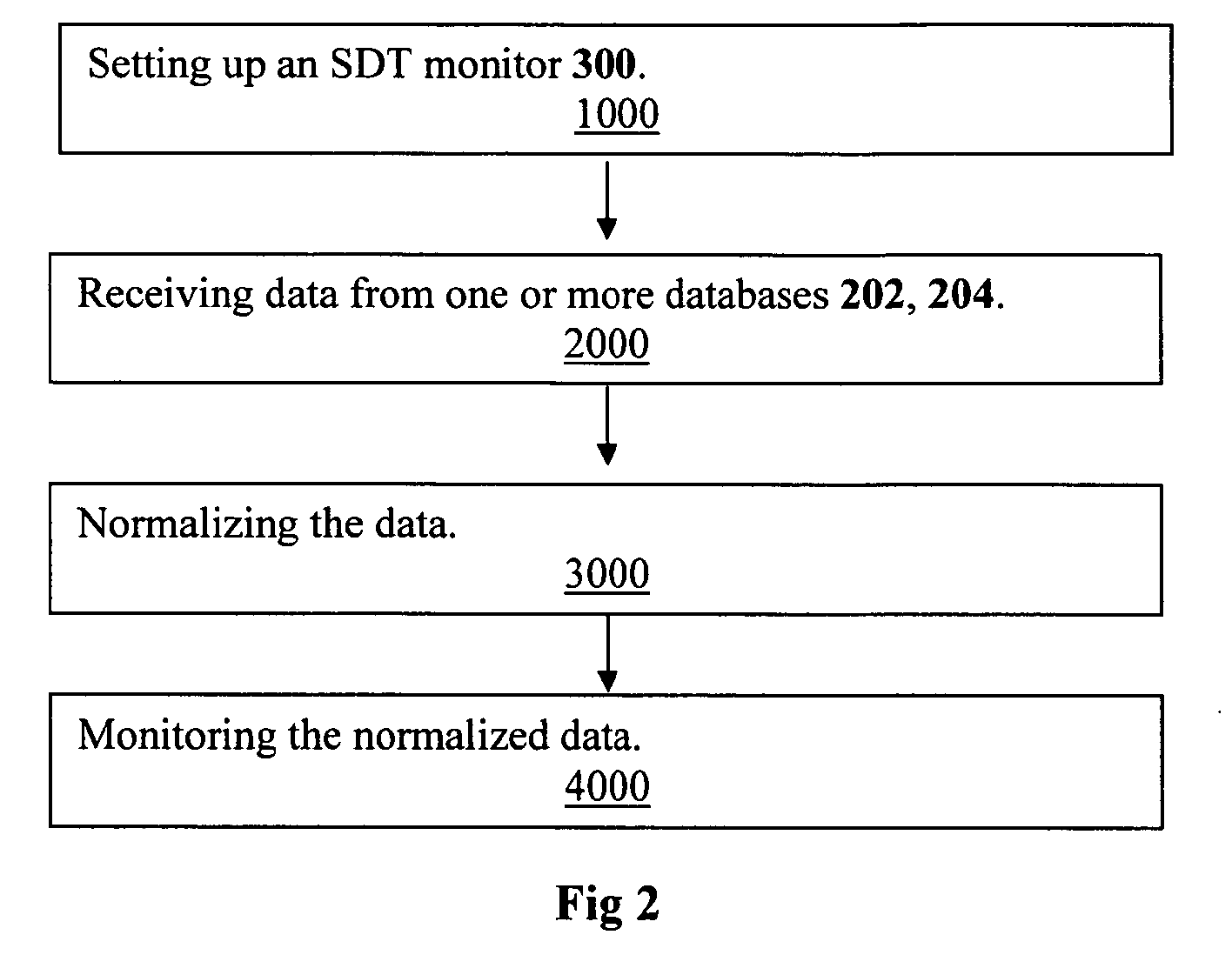Canonical model to normalize disparate persistent data sources
a persistent data source and canonical model technology, applied in the field of methods to normalize and monitor disparate persistent data sources, can solve the problems of difficult monitoring and evaluation of the category “employees”, difficult to match this information efficiently, and difficult to integrate data from different applications
- Summary
- Abstract
- Description
- Claims
- Application Information
AI Technical Summary
Benefits of technology
Problems solved by technology
Method used
Image
Examples
example 1
[0061]FIG. 6 illustrates an example of transactions T10 and T12 from database 202 and transactions T20 and T22 from database 204. Transaction T10 is logged on data log 212 and replicated by replication agent 222 to transaction T11 in a first event stream 226. Transaction T12 is logged on data log 212 and replicated to transaction T13 in the first event stream 226. Data reader 305 captures the first event stream 226, and directs transactions T11 and T13 to the inference engine 307 where the transactions are transformed to transactions T11′ and T13′ according to a first source ontology 310 and then normalized to canonical form by canonical ontology 330 and stored as canonical instances C11 and C13 respectively in the canonical database 340.
[0062]Similarly, transaction T20 is logged on data log 214 and replicated by replication agent 224 to transaction T21 in a second event stream 228. Transaction T22 is logged on data log 214 and replicated to transaction T23 in the second event strea...
example 2
Using a Destination Ontology
[0064]To show the use of a destination ontology 334, FIG. 7 illustrates the example given above of transactions T10 and T12 from database 202 and transactions T20 and T22 from database 204. Transaction T10 is logged on data log 212 and replicated by replication agent 222 to transaction T11 in a first event stream 226. Transaction T12 is logged on data log 212 and replicated to transaction T13 in the first event stream 226. Data reader 305 captures the first event stream 226 and directs transactions T11 and T13 to the inference engine 307, where the transactions are transformed to transactions T11′ and T13′ according to a first source ontology 310 and then normalized to canonical form C11 and C13 respectively by canonical ontology 330. C11 and C13 are then transformed into a target database's metadata language as D11 and D13 respectively by destination ontology 334, and D11 and D13 are stored in the canonical database 340.
[0065]Similarly, transaction T20 i...
PUM
 Login to View More
Login to View More Abstract
Description
Claims
Application Information
 Login to View More
Login to View More - R&D
- Intellectual Property
- Life Sciences
- Materials
- Tech Scout
- Unparalleled Data Quality
- Higher Quality Content
- 60% Fewer Hallucinations
Browse by: Latest US Patents, China's latest patents, Technical Efficacy Thesaurus, Application Domain, Technology Topic, Popular Technical Reports.
© 2025 PatSnap. All rights reserved.Legal|Privacy policy|Modern Slavery Act Transparency Statement|Sitemap|About US| Contact US: help@patsnap.com



